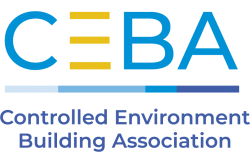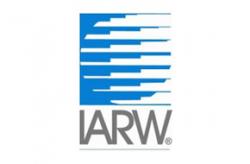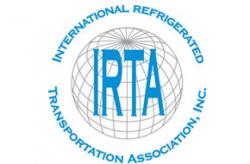Concerns Communicate Over Proposed Rule
OSHA proposes additional injury and illness reporting requirements.
On March 30, 2022, the U.S. Occupational Safety and Health Administration (OSHA) published a proposed rule entitled, “Improve Tracking of Workplace Injuries and Illnesses.” The rule focuses on increasing the electronic submission of injury and illness logs, similar to efforts undertaken by the Obama Administration in 2016. OSHA has stated that the proposed rule would improve its ability to use its enforcement and compliance assistance resources to identify workplaces where workers are at high risk and empower workers by increasing transparency in the workforce.
Current recordkeeping regulations require two categories of establishments to electronically submit information from their Form 300A to OSHA on an annual basis. First, establishments with 250 or more employees at any time during the previous calendar year, in all industries that are routinely required to keep OSHA injury and illness records, to electronically submit information from their 300A to OSHA once a year. Second, establishments with 20-249 employees at any time during the previous calendar year, in specific industries are required to electronically submit information from their OSHA 300A to OSHA. These provisions would have a significant impact on the cold chain, as warehousing and storage and construction would be designated as highhazard industries for the purposes of reporting under the rule.
OSHA’s new proposed rule would:
• Require establishments with 100 or more employees in certain high-hazard industries to electronically submit information from their OSHA Forms 300, 301 and 300A to OSHA once a year. Warehousing and storage and construction would be designated as high-hazard industries subject to this provision.
• Update the classification system used to determine the list of industries covered by the electronic submission requirement.
• Remove the current requirement for establishments with 250 or more employees not in a designated industry to electronically submit information from their Form 300A to OSHA annually. • Require establishments to include their company name when making electronic submissions to OSHA.
• Establishments with 20 or more employees in certain high-hazard industries would continue to be required to electronically submit information from their OSHA Form 300A annual summary to OSHA annually. Warehousing and storage and construction would be designated as high-hazard industries subject to this provision.
OSHA believes that the electronic submission of establishment-specific and case-specific information from the Forms 300 and 301 will improve workplace safety and health by:
• Allowing OSHA to use its resources more effectively by better enabling the agency to identify workplaces where workers are at greatest risk from specific hazards, and to target its compliance assistance and enforcement efforts accordingly.
• Improving the ability of employers to compare their own injury and illness data on hazards with the data from similar establishments in the same industry.
• Improving the ability of stakeholders to make more informed decisions using recent establishment-specific, casespecific, injury/illness information, and improving research on occupational safety and health.
GCCA is concerned about the potential impacts of the proposed rule and is working with the Coalition for Workplace Safety (CWS) to submit comments to OSHA articulating industry’s concerns.
OSHA’s current proposal would require electronic submission of employer summary data and individual employee injury and illness data on a much larger scale, and we believe that the proposed rule would not serve to prevent employee injuries or illnesses in the workplace. Electronic submission and public posting of this data serves only to put employers at risk for improper disclosure, mischaracterization of the data and release of sensitive employer as well as employee information.
Smaller entities are particularly vulnerable to release of such information, where mischaracterization of data can irreparably harm their business and individual employee information may be easier to ascertain. As a result, OSHA’s plan to extend the requirements to smaller entities is particularly concerning.
The coalition’s comments address four major problems posed by the proposed rule:
1. Confidentiality and protection of sensitive employer data.
2. Duplicative recordkeeping and reporting requirements.
3. OSHA’s ability to appropriately manage this increased data collection.
4. Uncertainties in compliance resulting from OSHA’s ever-changing recordkeeping requirements.
Information contained in OSHA Forms 300 and 301 includes sensitive business information, which deserves protection from public disclosure including through FOIA. Forms 300 and 301 contain private employee information and other sensitive medical information that should not be made publicly available. In addition, forms 300 and 301 provide no valuable enforcement data to OSHA. The electronic submission of the 300 Logs and 301 Forms occurs well after the recording of a work-related injury or illness, making the data stale by the time OSHA receives it. More importantly, information contained on the 300 Log or 301 Forms is not necessarily indicative of potential hazards in a workplace or of potential violations of existing OSHA regulations.
OSHA’s proposed data collection raises concerns regarding duplicative reporting and recordkeeping. Some employers subject to OSHA’s electronic submission requirement must also respond with the same or similar data to the Bureau of Labor Statistics (BLS) Survey of Occupational Injuries and Illnesses (“SOII”). Since OSHA began collecting Form 300A Summary data in 2017, employers subject to both submission requirements have had to submit the same data in different forms to each agency. Employers who submit data to OSHA should not be required to separately submit the same data to BLS.
The OSHA proposal also creates dual recordkeeping requirements for employers. In order to protect sensitive employee information (the collection of which is mandated by OSHA), OSHA does not require employers to submit all the data kept on the OSHA Forms 300 and 301. However, because employers are required to scrub the forms of sensitive employee data prior to submitting them, OSHA essentially requires employers to maintain two separate sets of records—one complete set to maintain on file and a separate set reflecting the “scrubbed” submission to OSHA.
OSHA must improve internal data handling processes before any new data collections go into effect. These changes will require significant technological improvements within OSHA, which it does not yet seem to have initiated, and will require changes to employer processes for collecting, reviewing and submitting this information. These processes, both within and outside of OSHA, will need to be tested for accuracy and effectiveness. OSHA must account for the time it will take to make these adjustments in determining the effective date of any final rule. Employers must have notice of the exact requirements of any final rule at the beginning of the year for which collected data will be submitted.
OSHA’s current process to correct errors in online data is too slow. OSHA must establish clear procedures for employers to make corrections to already submitted data and improve internal processes to ensure those corrections are reflected in the publicly posted data. Sometimes an employer’s investigation into whether an injury or illness requires reporting can take months or even years. Information discovered through an investigation may require a change in how or whether an injury is recorded. Currently, upon notice from an employer of a required correction, it takes months for OSHA to make these corrections online.
OSHA must be mindful of the impact of frequent changes to recordkeeping and reporting requirements on employers’ compliance efforts. OSHA’s frequent changes and reversals to its recordkeeping policies, including requirements surrounding electronic submission of injury and illness data, has resulted in significant confusion among employers, particularly small employers, regarding what requirements apply to their business. OSHA should be mindful of how these changes impact employers as it considers finalizing this proposal, determining effective dates, and issuing any future proposals.
The public comment period for the proposed rule ends on June 30, 2022. OSHA will then consider the comments received and draft a Final Rule in the coming months. GCCA will continue to work with its industry partners to communicate concerns with the rulemaking to OSHA as the process moves forward.
LOWELL RANDEL is Senior Vice President, Government and Legal Affairs at GCCA.
EMAIL: lrandel@gcca.org
Source: Cold Facts July/August 2022 issue



